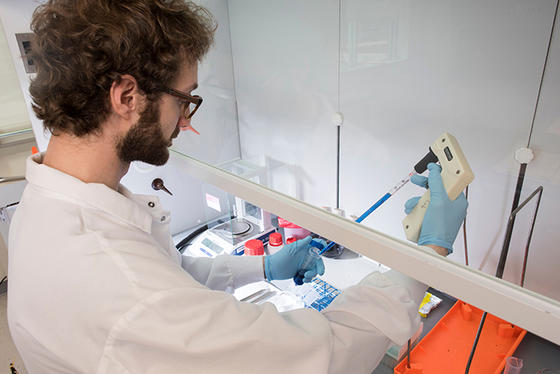George Mason University has once again been recognized as one of the nation’s top research universities by the Carnegie Classification of Institutions of Higher Education.

By earning the “very high research” (or R1) designation, Mason—the largest public research university in Virginia—is among an elite group of 120 institutions known for performing at the highest research level in terms of research productivity and impact. Mason, which first attained the tier one research ranking in 2016, is the youngest independent university listed.
Mason President Ángel Cabrera said the designation is “an affirmation of our commitment to excellence and recognition of the caliber of our faculty. It is an impressive achievement of our entire university community.”
The Carnegie evaluation, performed by the Center for Postsecondary Research at Indiana University, looked at university levels of research activity in 2016-17, and awards of research/scholarship doctorates and professional practice doctorates.
“The outstanding scholarship of our faculty and the vibrancy of our doctoral programs is really what carries the day, specifically in fields Mason is traditionally known for in the social sciences and humanities, and the strides we made in STEM and other fields,” Provost S. David Wu said. “Most importantly, this ranking doesn’t even take into account the momentum created by our faculty in 2018.”
Annual sponsored expenditures for research, scholarship and creative work rose 14 percent between 2017 and 2018, setting a Mason record. Sponsored awards increased by more than 30 percent over the same period, which puts Mason on pace to meet a strategic goal of $225 million in annual research expenditures by 2024.
Those gains reflect the confidence federal research agencies have in Mason faculty and expertise.
Mason was the eighth-highest recipient of funding from the National Endowment for the Humanities in the past decade, with $5.8 million. It was in the top 23 percent of universities in research and development expenditures from the National Science Foundation for fiscal year 2017.
“It is an honor to work with Mason’s talented faculty and student community, and to support an environment in which multidisciplinary research, scholarship and creative work is so highly prized,” said Deb Crawford, Mason’s vice president for research.
Virginia also continues to invest in Mason, helping fund state-of-the-art research facilities in each of the university’s Northern Virginia campuses, including $125 million to create the Institute for Digital InnovAtion (IDIA) and School of Computing in Arlington.
“Few institutions have grown in size and stature as rapidly as George Mason,” Cabrera said. “The Carnegie Tier 1 status sends an unequivocal signal to our partners and funders about our capabilities.”
